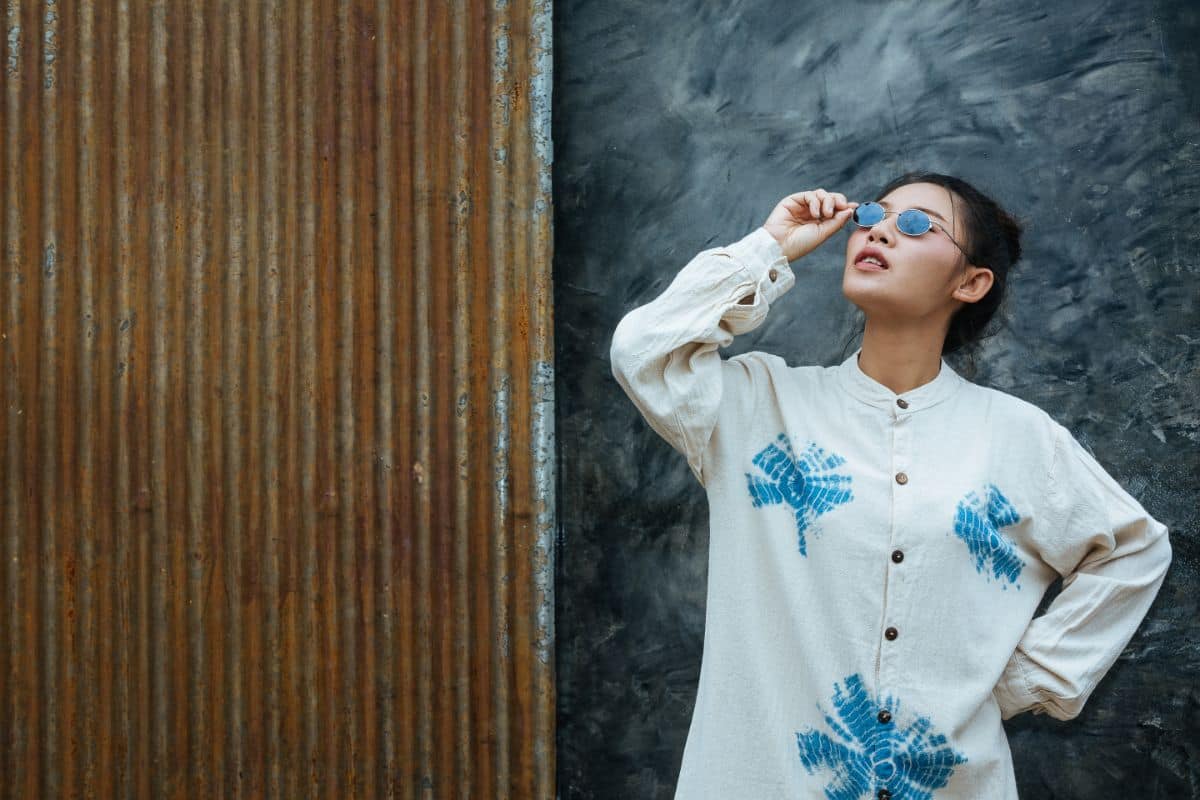Introduction
Fashion Week is more than just a celebration of style—it’s a convergence of creativity, innovation, and cutting-edge technology. Every year, designers, models, influencers, and industry experts come together to unveil the trends and ideas that will shape the future of fashion. This year, DTI (Design, Technology, and Innovation) is at the heart of the revolution, merging tradition with futuristic concepts to redefine the fashion industry.
From AI-powered designs to sustainable practices, Fashion Week 2024 promises to be a transformative event showcasing how technology and innovation shape the runway and beyond. Let’s dive deeply into how DTI influences Fashion Week and the trends making headlines this year.
The Role of DTI in Transforming Fashion Week
Fashion Week is no longer confined to haute couture or luxury designs—it has evolved into a platform for technological breakthroughs and sustainable practices. Designers are now integrating DTI tools to reimagine their collections, offering a perfect blend of artistry and tech-savvy solutions.
Through the lens of DTI, fashion is entering a new era where creativity meets functionality. Let’s explore how this collaboration is driving change in the fashion world.
Technology and Design: A Seamless Collaboration
DTI has revolutionized how designers conceptualize and create their collections. Technology is a game-changer, from AI-based design platforms that predict fashion trends to 3D printing that brings intricate designs to life.
This year, Fashion Week is featuring collections that highlight the union of tech and creativity, offering:
Augmented Reality (AR)
fashion shows for immersive experiences.
Virtual fittings
and AI-generated clothing for precision and customization.
Data-driven designs
that cater to real-time consumer demands.
For example, many designers now host virtual runways where audiences can interact with collections in augmented environments. These innovations make Fashion Week not just an event but an experience.
Sustainability in the Spotlight
Sustainability has become a cornerstone of modern fashion, and DTI enables designers to adopt eco-friendly practices seamlessly. It includes using:
Innovative fabrics
that minimize waste during production.
Circular fashion techniques
to recycle old materials into new designs.
3D-printed garments,
reducing the environmental impact of traditional manufacturing.
Fashion Week 2024 showcases how DTI-driven sustainable practices reduce carbon footprints and elevate design aesthetics.
Virtual Fashion: A Digital Revolution
With the world moving towards digitization, Fashion Week is embracing the power of virtual fashion. Key highlights include:
Virtual avatars
showcasing collections.
Holographic displays
create larger-than-life presentations.
Digital-only garments
are offering zero-waste alternatives.
Virtual fashion shows have broken geographical barriers, making collections accessible globally. This tech-forward approach is democratizing fashion while offering an innovative viewing experience.
Key Trends at Fashion Week 2024
This year’s Fashion Week reflects the intersection of technology, sustainability, and creativity. Some of the most talked-about trends include:
Tech-Enhanced Fabrics
Garments that react to environmental stimuli or change colours based on mood are gaining traction. These DTI-driven textiles represent the future of adaptive fashion.
3D-Printed Fashion
3D printing enables designers to create intricate, custom-made designs that were previously unattainable. From sculptural dresses to avant-garde accessories, 3D printing is stealing the spotlight.
AI-Powered Design Tools
Artificial intelligence is helping designers predict trends, streamline production, and personalize collections based on consumer preferences. AI-driven insights are making fashion more accessible and relatable to diverse audiences.
The Future of Fashion with DTI
The influence of DTI on Fashion Week extends beyond the runway, setting the stage for a future where fashion is:
Inclusive:
Virtual experiences allow global participation.
Sustainable:
Eco-friendly innovations are becoming the norm.
Customizable:
AI and data analytics enable personalized designs.
Designers already use AI to predict trends, 3D printing for eco-conscious collections, and smart textiles for functional garments. These innovations are just the beginning, with more groundbreaking advancements on the horizon.
Why DTI is Indispensable to Fashion Week
DTI is not just influencing trends—it’s revolutionizing the entire fashion ecosystem. By combining sustainability, technology, and creativity, DTI creates opportunities for brands to redefine themselves.
From digital fashion houses to eco-conscious production methods, the possibilities with DTI are endless. As Fashion Week evolves, imagining what the future holds for this dynamic intersection of art and technology is exciting.
Conclusion
Fashion Week reflects the times we live in, and in 2024, the spotlight is firmly on Design, Technology, and Innovation (DTI). Whether through tech-infused fabrics, virtual runways, or sustainable practices, DTI is setting the stage for a more inclusive, accessible, and forward-thinking fashion industry.
As we embrace this new era of fashion, one thing is clear: the future of style is not just about what we wear but how it’s made, experienced, and appreciated—all thanks to the transformative power of DTI.
Frequently Asked Questions (FAQs)
1. What is DTI in the context of Fashion Week?
DTI stands for Design, Technology, and Innovation. In the context of Fashion Week, DTI refers to the integration of advanced design tools, technological advancements, and innovative approaches to revolutionize the fashion industry. It includes using AI for design, 3D printing for fashion creation, and sustainable practices to enhance collections presented at Fashion Week.
2. How is technology influencing Fashion Week trends?
Technology plays a crucial role in shaping Fashion Week trends. With the help of DTI, designers are adopting virtual fashion shows, interactive digital experiences, AI-driven design tools, and sustainable tech fabrics. These innovations provide new ways to engage audiences and offer more personalized, eco-friendly fashion.
3. What are some examples of DTI innovations in Fashion Week?
Some key examples include 3D printing for fashion, digital fashion shows, AI-driven designs, and sustainable fabrics like smart textiles. Designers are also using data analytics to predict trends and optimize their collections based on consumer preferences, all powered by DTI advancements.
4. How does DTI contribute to sustainability in fashion?
DTI is a driving force behind sustainable fashion, helping designers create eco-friendly collections. Designers can reduce waste through innovative technologies like 3D printing, and bright fabrics can be used for more efficient, long-lasting garments. Additionally, AI helps predict and minimize overproduction by utilizing data-driven insights.
5. Will DTI influence future Fashion Weeks?
Yes, DTI will continue to influence Fashion Weeks in the future. As technology advances, designers will use more sophisticated tools to push the boundaries of fashion. Virtual reality, augmented reality, and even wearable tech are expected to play a more prominent role, making Fashion Week more accessible and immersive for audiences worldwide.
6. How does AI impact the fashion industry during Fashion Week?
AI impacts Fashion Week by assisting designers in predicting trends, optimizing designs, and enhancing the creative process. AI tools can analyze vast amounts of data to understand consumer preferences, helping designers make more informed decisions about their collections. This technology streamlines production and reduces the time to bring designs to life.
7. What are virtual fashion shows, and how are they part of Fashion Week?
Virtual fashion shows are digital presentations of fashion collections, typically streamed online, where models showcase designs in virtual environments. These shows use DTI-driven innovations, like augmented reality or 3D avatars, to create a unique, immersive experience. Virtual fashion shows have become a prominent feature of Fashion Week, allowing designers to reach the global audience without the constraints of physical locations.
8. How do DTI technologies impact the consumer experience at Fashion Week?
DTI technologies enhance the consumer experience by making fashion more interactive and engaging. Virtual fashion shows, AI-driven designs, and sustainable materials give consumers a more dynamic view of the industry. Additionally, these technologies help brands connect with consumers in new and exciting ways, allowing for a more personalized and eco-conscious shopping experience.
9. What does the future of fashion look like with DTI?
DTI undoubtedly shapes the future of fashion. We expect to see more sustainable, tech-infused collections that utilize AI, 3D printing, and data-driven design to create custom, eco-friendly, and innovative styles. Fashion Week will continue to evolve with the integration of digital fashion, smart textiles, and virtual experiences, all driven by DTI.
10. How can designers incorporate DTI into their collections?
Designers can incorporate DTI into their collections by adopting new design technologies, using sustainable materials, and utilizing data analysis to predict trends. Integrating 3D printing, AI tools, and virtual experiences into their design processes can help them stay ahead of the curve and present innovative, forward-thinking collections at Fashion Week.
















